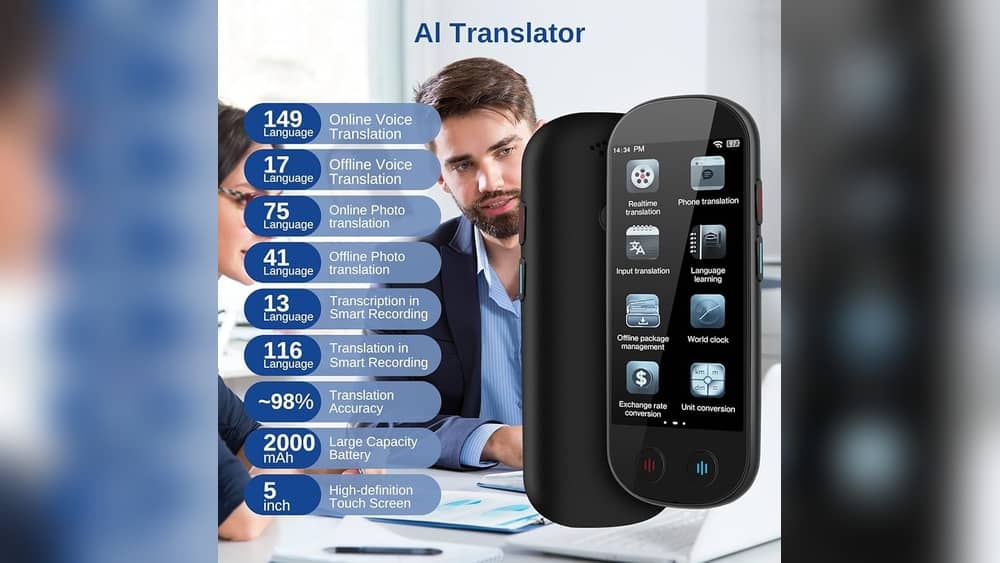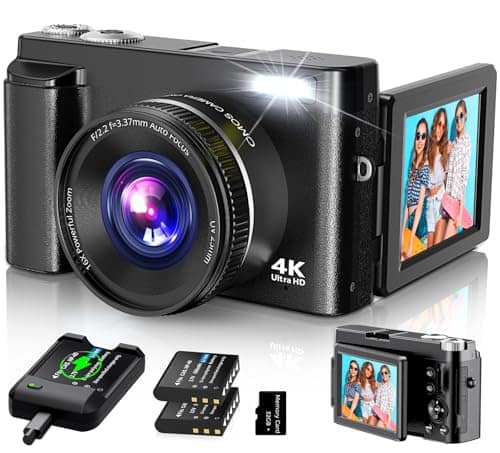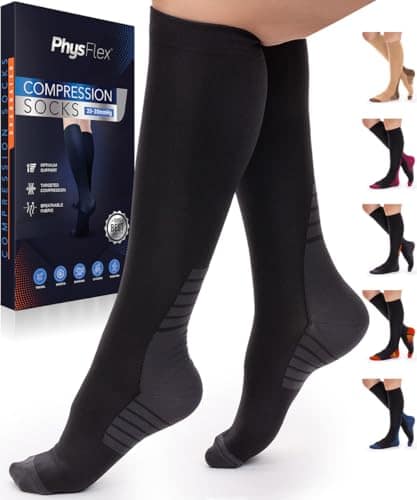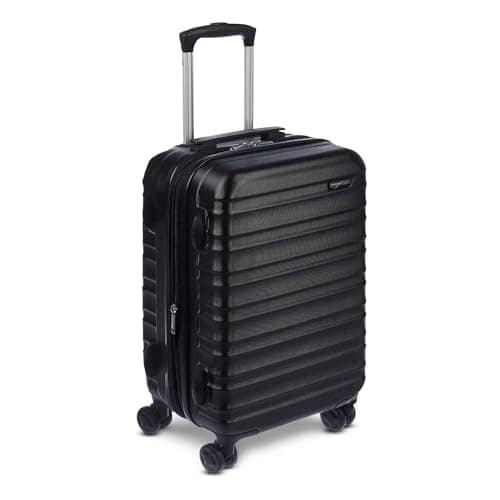Traveling to a new place can be exciting, but language barriers can quickly turn your adventure into a frustrating experience. Imagine standing in a busy market or ordering food at a local café, only to struggle with communication.
You need a tool that makes understanding and speaking a new language easy and fast. That’s where the best translator for travel comes in. It’s not just about words—it’s about connecting with people, feeling confident, and making your trip smoother.
Keep reading to discover the top translators that will change the way you explore the world.
Why Use A Travel Translator
Traveling to new places often means facing different languages. A travel translator helps overcome these language barriers. It makes conversations easy and clear. Using a travel translator is smart for any traveler who wants smooth and fun trips.
Bridging Language Gaps
A travel translator connects you with locals by breaking language walls. It turns unknown words into familiar ones fast. This helps you ask questions, get directions, and understand signs. No more guessing or feeling lost.
Enhancing Travel Experience
Talking with locals adds joy to travel. A translator lets you join local life and culture. Try local food, shop at markets, and make new friends. It makes your trip richer and more memorable.
Avoiding Miscommunication
Wrong words cause problems and confusion. A travel translator helps avoid mistakes in conversations. It ensures your needs and messages are clear. This keeps you safe and respected while traveling.
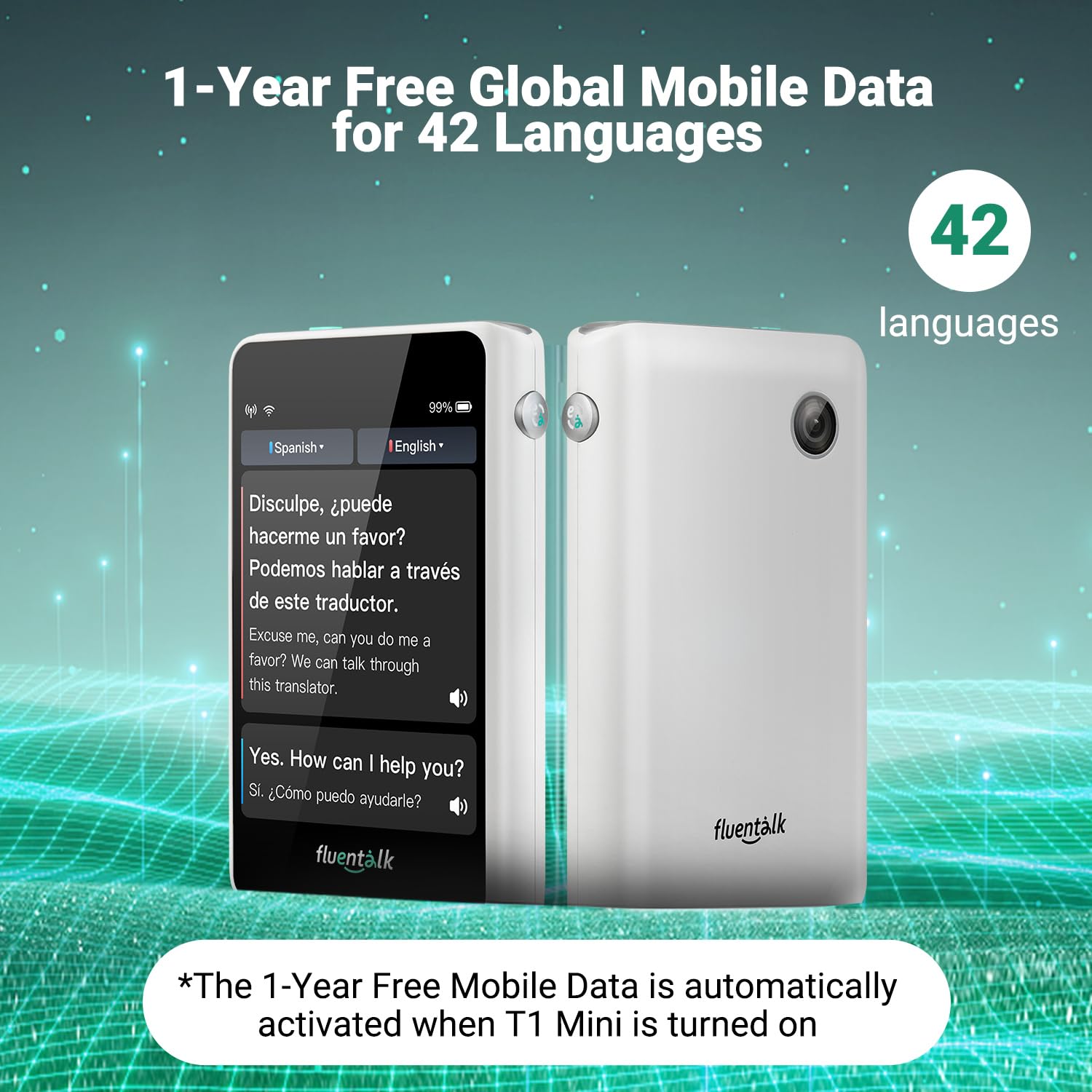
Credit: www.amazon.com
Key Features To Look For
Choosing the best translator for travel starts with knowing what features matter most. Good features make your trip easier and help you communicate better. Focus on tools that work well in real situations. Below are key features that improve your travel translation experience.
Accuracy And Language Support
Accuracy is essential for clear communication. The translator should understand and convert phrases correctly. It must support many languages, including common and less popular ones. This ensures you can use it anywhere you travel.
Offline Functionality
Traveling often means no internet access. A good translator works offline without losing quality. Download languages before your trip for smooth use in remote areas. This saves you from extra charges and connection problems.
Ease Of Use
Simple design saves time and frustration. The app should be easy to navigate for all users. Large buttons and clear text help quick translations. It must work well for beginners and tech-savvy travelers alike.
Speech Recognition And Pronunciation
Talking is faster than typing. The translator should hear your voice clearly and respond fast. It must also pronounce words correctly so locals understand you. This feature improves conversations and reduces confusion.
Top Translator Apps For Travel
Finding the right translator app can make travel easier and more fun. These apps help you talk with locals, read signs, and understand menus. They work offline too, useful in places without internet. Here are some of the best translator apps for travel.
Google Translate
Google Translate supports over 100 languages. It offers text, voice, and camera translation. You can translate signs and menus instantly by pointing your camera. It works offline after you download language packs. The app is simple to use and free.
Itranslate
iTranslate covers more than 100 languages. It offers voice and text translation. The app has a feature to hear translations in different dialects. Offline mode lets you translate without internet. It is great for quick and easy conversations.
Microsoft Translator
Microsoft Translator supports over 70 languages. It offers text, voice, and conversation translation. The app allows group chats with translation for all participants. Offline translation is available for many languages. It works well for travelers in groups.
Sayhi Translate
SayHi Translate offers simple voice and text translation. It supports around 90 languages and dialects. The app speaks translations aloud for easy listening. It adjusts speed for better understanding. SayHi is perfect for quick talks and questions.
Papago
Papago focuses on Asian languages like Korean, Japanese, and Chinese. It supports text, voice, and image translation. The app works offline after downloading languages. Papago is useful for travelers visiting Asia.
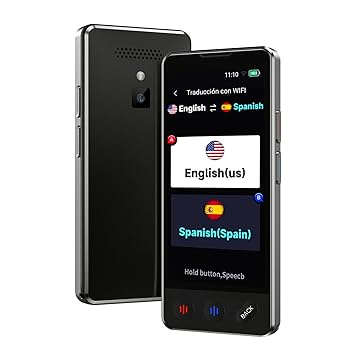
Credit: www.amazon.com
Handheld Devices Vs. Apps
Choosing the right translator can make your travel easier and more fun. Two popular options are handheld devices and mobile apps. Each has its own benefits and limits. Understanding these helps you pick what fits your travel style best.
Pros Of Dedicated Devices
Dedicated translator devices focus only on language. They offer fast and accurate translations. Many work offline, saving internet data. Their microphones often capture speech clearly in noisy places. Battery life usually lasts longer than phones. Small screens keep things simple and easy to read. These devices are made for travel, so they are durable and lightweight.
Advantages Of Mobile Apps
Mobile apps are easy to download and update. They offer many languages in one place. Apps often include extra features like voice-to-text and camera translation. Most travelers already have a smartphone, so no extra device is needed. Apps can connect to the internet for better accuracy. They also store recent translations for quick use later. Apps work well for casual and spontaneous translation needs.
Choosing What Fits Your Trip
Consider trip length and places you visit. If internet access is limited, a handheld device is safer. For short trips or cities with good internet, apps work fine. Think about your budget and how much space you have. If you want simple use and long battery, go for a device. If you want many languages and extra features, pick an app. Match the tool to your travel style for best results.
Tips To Speak Like A Local
Speaking like a local makes travel more fun and rewarding. It helps you connect with people and understand the culture better. Using simple tips can improve your language skills quickly. Focus on local speech, sounds, and how technology fits with culture. This way, you speak naturally and feel more confident.
Using Local Dialects And Slang
Every place has its own way of talking. Locals use special words and phrases not found in books. Learning these makes your speech sound real. Listen to how people talk in markets or cafes. Note common slang and try to use it in conversations. This shows respect and helps you blend in.
Practicing Pronunciation
Clear pronunciation is key to being understood. Repeat words slowly and focus on sounds. Use language apps to hear native speakers. Record yourself and compare. Practice daily, even for a few minutes. Small steps lead to big improvements.
Combining Tech With Cultural Awareness
Translation apps help with quick word meanings. Use them to learn phrases and check pronunciation. Still, pay attention to cultural context. Some words might be polite or rude depending on the setting. Watch local shows or videos to catch these cues. Technology and culture together create smart speaking habits.
Future Trends In Travel Translation
The future of travel translation holds exciting possibilities. Technology continues to improve how travelers communicate across languages. Advances in software and hardware make translations faster, easier, and more accurate. Travelers can expect tools that work seamlessly during their trips. These tools will help break language barriers in real time.
Ai And Real-time Translation
Artificial intelligence drives much of the progress in translation. AI helps devices understand spoken words instantly. It can translate conversations live, allowing smoother communication. This technology reduces delays and errors. Travelers will speak naturally and get quick translations back. AI also learns from interactions, improving over time.
Augmented Reality Integration
Augmented reality (AR) adds visual layers to the real world. AR translation apps show translated text right on signs or menus. Travelers see translations through their phone cameras or smart glasses. This makes reading foreign text easier and faster. AR helps users understand their environment without stopping to type or speak.
Improved Contextual Understanding
Future translators will grasp context better. They will recognize slang, idioms, and tone. This leads to more natural and accurate translations. Machines will know when to be formal or casual. Contextual awareness helps avoid misunderstandings. Travelers will enjoy clearer conversations with locals.

Credit: www.amazon.com
Frequently Asked Questions
What Features Make A Translator Best For Travel?
A travel translator should offer offline mode, voice recognition, and multiple languages. It must be easy to use and fast. Accurate translations and a compact design improve convenience on the go.
Can Travel Translators Work Without Internet Connection?
Yes, many travel translators function offline. They store essential language data locally. This feature is vital when traveling to areas with limited internet access.
Which Languages Are Essential In Travel Translators?
Most travel translators cover popular languages like English, Spanish, French, Chinese, and Arabic. Including regional dialects enhances communication in diverse destinations.
How Accurate Are Travel Translator Apps?
Accuracy varies by app and language. Top translators use AI and neural networks for precise translations. Regular updates improve performance and reduce errors.
Conclusion
Choosing the best translator for travel can ease your journey. It helps you talk with locals and understand signs quickly. A good translator saves time and avoids confusion. Many apps work offline, perfect for places without internet. Pick one that fits your needs and travel style.
Simple tools make travel more fun and less stressful. Don’t forget to practice a few local words too. Ready to explore with confidence and ease? Your perfect travel translator awaits.

